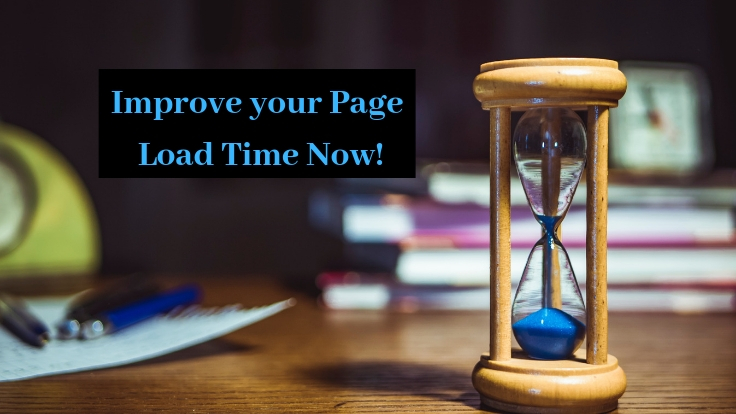Today, even seconds create the difference, users have no endurance for websites with weak load time or poor performance. Nearly all users on the web expect a site to load in 2 seconds or less. If it isn’t loaded in 3 seconds, those users tend to leave or reject the site.
A still more startling statistic is that 64% of customers or shoppers who are disappointed with an online store’s experience & loading time will carry their business away. That means you’re not only missing your current visitors and lowering conversion rates, also you run the risk of your site dropping traffic from those consumers who may have suggested your website to others.
So what is aforementioned Page Load Time all about and why is it so powerful during the process of website designing and application development, let’s discuss below.
Search engines like Google apply page load time in algorithms that determine search engine rankings, which signifies they’re more likely to lead shoppers to sites that load fast.Speed is not just the only thing to concentrate on, there are nearly more than 200 signals in Google’s search algorithm, and page load time is simply one of them.Even small changes can shave time off and help raise your rankings.
With this in consideration, let’s take a glance at techniques to optimize while website designing for the best achievable performance.

Related Post: 10 Incredible Benefits of Social Media and Social Media Marketing!!
1.Minimize HTTP Requests
HTTP, commonly known as Hypertext Transfer Protocol, Requests are computed whenever a browser retrieves a file, page, or an image from its web server.
These calls lead to use around 80% of a Webpage’s load time.
This signifies that the more HTTP requests you need to load, the longer it needs for the page to go and retrieve them completely, increasing your web page’s load time.
2. Combining CSS/JS Files
Rather than forcing the browser to retrieve multiple CSS or Javascript files to load, try combining your CSS files into one larger file (same for JS).If you find that you only need to load certain images on the desktop or need to run a specific script on mobile only, using conditional statements to load them can be a great way to increase speed.
3.Reduce the number of images you use
Remove fairly images especially if their file sizes are big. This may not only help reduce image HTTP requests but may improve your UX-User Experience such distracting images that don’t correspond to your written content.
4.Browser Caching
Browser caching enables components on your website to be downloaded to your hard drive once into a cache, or temporary storage space. Those files are get stored locally on your system, which supports consequent page loads to boost in speed.As per the latest studies,40-60% of daily visitors to your site come in with an empty cache. So when users visit your website, you need to make it so the first page they see load instantly enough so they will unavoidably proceed through the rest of your website (with even faster load times).
5.Compress Images & Optimize Files
Images currently take up 60% of the average bytes loaded per page, So as mentioned early, remove any images of assets you believe you don’t need. Also, check the sizes of the existing image and optimize them simultaneously.Manage all your images under 150KB, nothing over 1920px in width, at an average/medium/72dpi quality level.
File Extensions suggested to be used should be either PNG, which must be applied for images where you need transparent background behind.
JPG is suitable for pictures or anything where fine detail is less significant.
This definitely increases your website’s overall performance.

Lastly, to conclude with, Loading time is a significant contributing factor to page abandonment. The average user has no endurance for a page to take excessively long to load.Google might crawl your site moderately or slower if you have a slow site. And that’s very critical – particularly if you are appending lots of fresh content or performing lots of edits to content on the website.
We have historically focused on the website designing for desktop versions of our site load as fast as possible, but with Google shifting to the mobile index first, an increase in the number of users on mobile devices, we must now also concentrate on mobile speed excessively.
Related Post: Everything you need to know about Email Marketing!
Beyond the rankings, optimizing your page load time is an excellent way to encourage users to get where they’re performing faster and happier shoppers are more easily converted into sales.A one-second delay decreases customer satisfaction.!!
It is rightly said-“Customers Are Won or Lost in One Second”!!
Ouriken with a team of well-experienced website designers makes it simpler by presenting you with the best website designs and is the technology partner that best fits your requirements.


